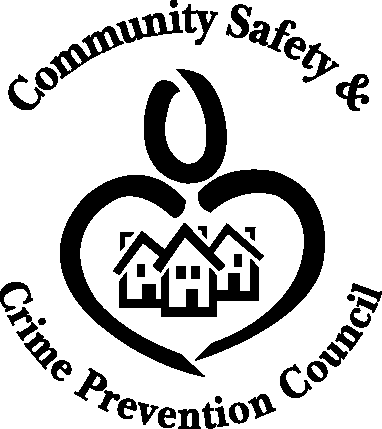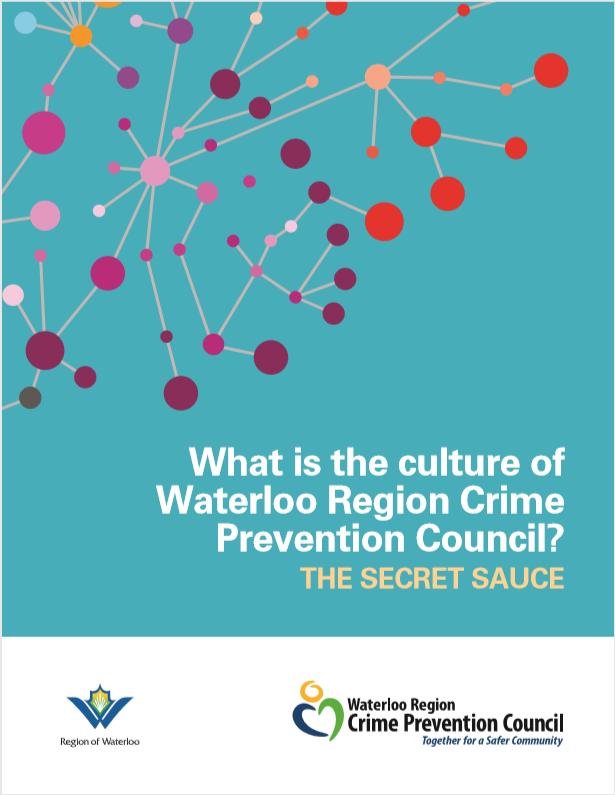Our Story
The Waterloo Region Crime Prevention Council (WRCPC) is an initiative core funded by the Region of Waterloo since 1994. Its work is rooted in a long history of restorative justice and community stewardship.
The WRCPC generates a greater public understanding of the root causes of crime, creating a deeper community commitment to prevention. To do this, WRCPC focuses its efforts on public education and engagement, knowledge exchange and evidence-based decision making, developing dynamic partnerships, and advocating for equity and against marginalization.
WRCPC strives to shift the focus of crime prevention upstream, building a community foundation where all citizens experience safety and wellbeing equitably. Upstream approaches to community safety and wellbeing are about more than the absence of crime; they are about creating a community where everyone has opportunities to grow, learn, work, play, connect, love, and be loved. When we start upstream, we make the connection between many diverse aspects of wellbeing such as safety, health, income, housing, and belonging. This approach allows us to address multiple downstream issues simultaneously with fewer resources and before harm happens.
The Waterloo Region Crime Prevention Council’s offices are located in the Governor’s House since 2015.
In 1878, the Governor’s House was added in front of the Waterloo County Gaol as the home for the “Gaoler” and his family. It became an integral part of this complex for 100 years. The Governor’s House, designed by local architect David W. Gingerich, was built in the mid-Victorian Italian Villa style and is one of the last existing houses of this type in the area.
The Governor’s House was built to act as a visual barrier between the surrounding community and the jail. The home also reflected the Governor’s respected position in the Town of Berlin (to later become Kitchener).
The Governor’s House currently houses the Waterloo Region Crime Prevention Council, an advisory community committee to Regional Council.
Read our Governance Policy
Council provides a forum for different views and ideas to be shared – and a solid base from which effective community action on crucial issues can be launched.
 Partnerships are at the heart of our approach. Forty council members bring together a broad range of community perspectives and work together to address the root causes of crime. Members represent the community-at-large, social service agencies, education, public health, municipal planning, justice, corrections, police, community and neighbourhood support agencies, and political representatives.
Partnerships are at the heart of our approach. Forty council members bring together a broad range of community perspectives and work together to address the root causes of crime. Members represent the community-at-large, social service agencies, education, public health, municipal planning, justice, corrections, police, community and neighbourhood support agencies, and political representatives.
We believe that together we can make a difference!
Collaboration
In 2013, the Crime Prevention Council created a Collaboration Value Statement that outlines the core values and principles of good collaboration.
This fun animation was produced to support our Collaboration Values Statement to promote the benefits of Good Collaboration for community partners and organizations:
Good Collaboration leads to:
- Engaged and empowered members and increased community buy-in
- Greater synergy which increases the collective capacity to solve complex problems
- Strong relationships grounded in trust, honesty and respect
- Maximized resources and greater overall impact
- Healthy and vigorous communities
The mandate of the first council was “to write a comprehensive and dynamic safety and crime prevention plan to be implemented within the Region of Waterloo and to assist in its implementation.”
In the early years the focus of council was on Research & Planning; Community Ownership and Interaction; and Crime Prevention Projects.
Download a copy of the WRCPC historic milestones
Our History
In 1993 a report of the Standing Committee on Justice and the Solicitor General called “Crime prevention in Canada : toward a national strategy” by Dr. Bob Horner was introduced. This report acknowledged the limitations of traditional approaches to justice and proposed a shift towards prevention.
“On the basis of the evidence it heard about the rise in criminal activity, the harm done to victims, the increases in resources to fight crime, and the factors associated with crime and criminality, the Committee believes the time has come for Canadians to get serious about crime prevention and fear reduction … Canada should develop and promote a strategy to reduce the opportunities for crime to occur and to respond to the underlying factors associated with criminal behaviour.”

- In 1993, Andrew Telegdi, Member of Parliament, asked Regional Council to invest in crime prevention at a local level. Regional Council passed this motion.
- In 1994, Police Chief Larry Gravill was assigned by Regional Chair Ken Seiling the task of establishing a committee for crime prevention that would involve citizens and local partners. The steering committee expanded to include members from many different health, social, educational and neighbourhood backgrounds as well as community representatives.
- In 1995, various community sectors formed a unique partnership known as the Community Safety & Crime Prevention Council (now known as the Waterloo Region Crime Prevention Council). The Region of Waterloo provided core funding for a Crime Prevention office and hired a program coordinator.

